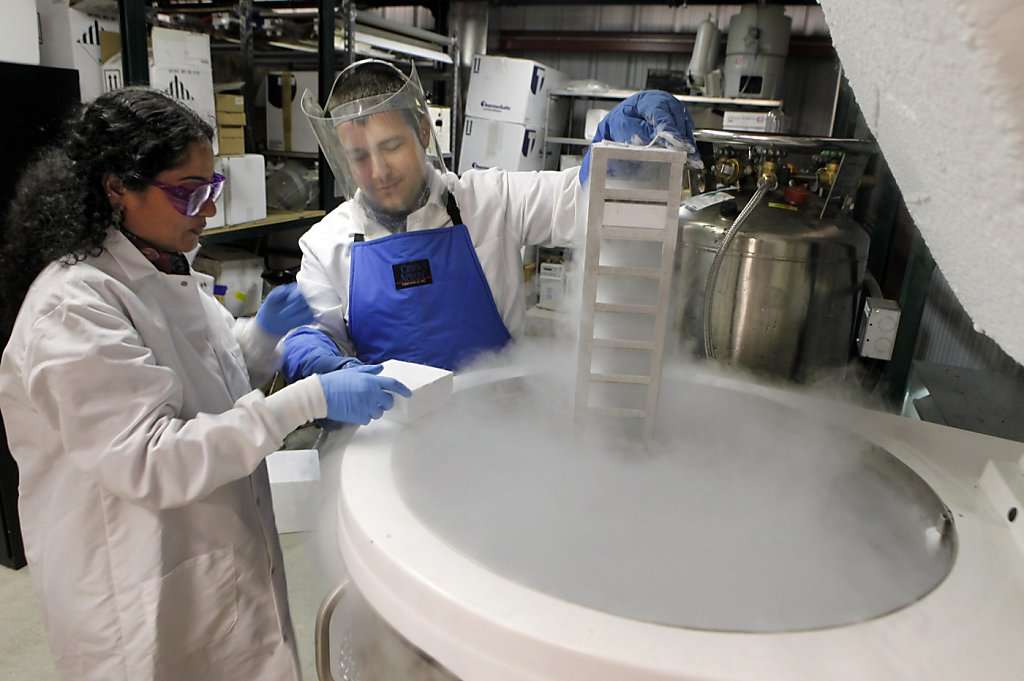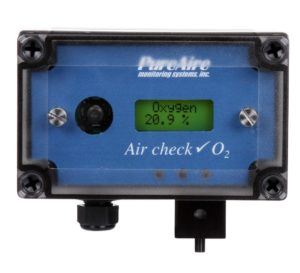Storing Liquid Nitrogen in Laboratories: Which Safety Precautions and Sensors Will Protect your Employees?
- By : PureAire Monitoring Systems
- Posted on : June 14, 2017
- News Room
Liquid nitrogen is frequently used in scientific research, chemistry classes, and even culinary arts nowadays. The substance is safe when properly stored, and as long as everyone follows safety protocols while handling the liquid nitrogen. As part of an environmental health and safety review (EHS review), learn safety considerations regarding storing liquid nitrogen in the lab setting.
EHS Review: Understand Liquid Nitrogen Risks
Liquid nitrogen is known for its cryogenic properties. It can freeze things incredibly quickly. This property also applies to people, so staff must take safety precautions when handling liquid nitrogen. Even seconds of exposure can damage skin and eye tissue, and may cause frostbite.
Staff should never transport liquid nitrogen in open containers. They should never reach directly into vats of the substance.
The main health risk with liquid nitrogen occurs when the liquid vaporizes into gas, which happens if it leaks into the atmosphere. Nitrogen expands in volume when it turns into gas, and depletes oxygen from the air. The gas has no odor or color, so there is no way staff can tell a leak has occurred without an alarm system. If a nitrogen leak occurs, oxygen levels will fall below safe thresholds. This causes severe cognitive and respiratory problems, as well as death by asphyxiation.
Liquid nitrogen, like other cryogenic liquids, needs a pressure-relief valve during storage. Without such a valve, internal pressure could cause the storage tank to explode. Liquid nitrogen should be stored in a room that has proper ventilation as a precaution around leaks. If a leak occurs, the ventilation system can help shunt gases outdoors, protecting the health of workers.
How to Protect Your Employees’ Environmental Health and Safety With an Oxygen Monitor
Facilities must install, calibrate, and maintain oxygen sensors to comply with safety policies regarding the storage of liquid nitrogen in the lab setting. These units act as a secondary precaution against the dangers of a nitrogen leak. An oxygen deficiency monitor or O2 sensor measures the levels of oxygen in the environment at all times. These devices provide labs with a cost-effective and reliable way to make sure there are no leaks in nitrogen storage areas.
For safety precautions, install one oxygen deficiency monitor anywhere liquid nitrogen is stored, handled, or used. These monitors mount to the wall quickly and provide continuous sampling of oxygen levels. As long as there is no leak, and the room contains enough oxygen, the monitors stay silent. If nitrogen leaked it would cause a decline in oxygen levels, eventually triggering an alarm and flashing light. The oxygen monitor would provide enough time for anyone working in the area to vacate the premises and avoid being harmed or killed.
While there are several styles of O2 sensor on the market, those from PureAire are preferred for their high quality and cost efficiency. PureAire’s O2 sensors feature zirconium, which lasts for 10+ years on average with no maintenance and no calibration. Once the monitor in installed, there’s nothing more that needs to be done. Since PureAire’s oxygen monitors are reliable once installed, and require less maintenance than the competition, they make it easier and cheaper for labs to protect worker safety. Learn more about PureAire’s products by visiting www.pureairemonitoring.com.




